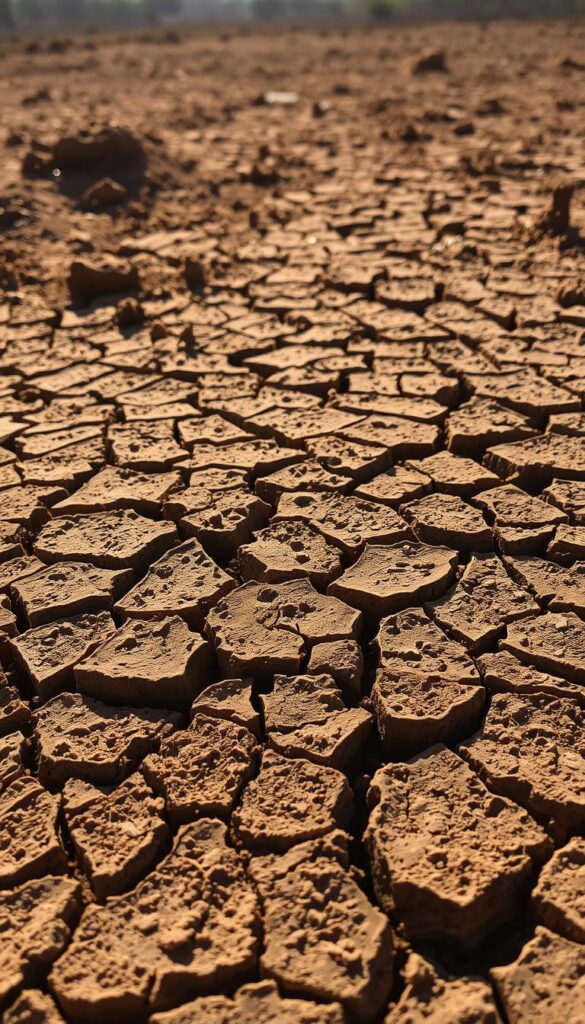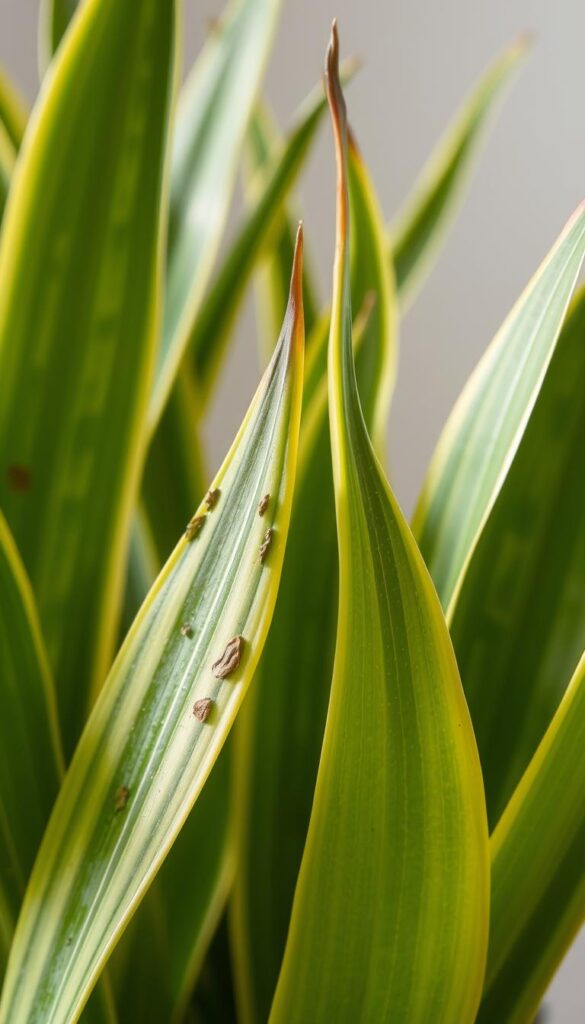I still remember the day I brought home my first snake plant. It was sleek, green, and seemingly indestructible. I had heard they were low-maintenance, but I quickly learned that “low-maintenance” doesn’t mean “no maintenance.”
Snake plants thrive when you water them only after the soil has completely dried out. This simple rule applies whether your plant is indoors or outdoors. The key is to let the soil dry fully between waterings, as these plants have adapted to store water in their leaves.
One of the reasons I love snake plants is their forgiveness. If you forget to water them from time to time, they’ll still bounce back. This makes them perfect for anyone new to houseplants. Their resilience is a big part of their charm.
Over time, I’ve developed a watering routine based on insights from experts like The Spruce and Costa Farms. The right watering strategy can make a huge difference in the health of your snake plant. Let me share what I’ve learned about keeping these beautiful plants happy and thriving.
Understanding Snake Plant Watering Needs
Snake plants are known for their resilience, making them perfect for busy people or those new to houseplants. Their thick leaves store water, allowing them to survive with minimal care. This natural ability to conserve water means they can go longer without watering compared to other plants.
The Resilient Nature of Snake Plants
One of the reasons I love snake plants is their forgiveness. If you forget to water them from time to time, they’ll still bounce back. Their resilience is a big part of their charm. This makes them perfect for anyone new to houseplants.
How Temperature, Light, and Humidity Play a Role
Environmental factors like temperature, light, and humidity directly affect their watering needs. In warmer temperatures, the soil dries out faster, so you may need to water more frequently. Bright light can also speed up the drying process, while high humidity slows it down. These conditions influence both the frequency and effectiveness of watering.
Signs such as drying leaves or yellowing indicate when the plant may need water. Different lighting conditions at home can require adjusting watering frequency. Understanding these signs at different times of the day is crucial. The ideal home environment helps optimize the snake plant’s performance and reduces the risk of overwatering and root rot.
Environmental Conditions and Their Impact on Watering
I’ve noticed that my snake plant’s watering needs change with the seasons. During the summer, the warm weather makes the soil dry out faster, so I water more frequently. In the winter, when it’s cooler, I can go weeks without watering—sometimes even once a month.
Seasonal Changes and Watering Frequency
The type of pot and soil I use also plays a big role. Well-draining soil helps prevent rot, while denser soil holds moisture longer. I check the soil regularly to see if it’s dry before watering again.
In the summer, my plant thrives with more water due to active growth. But in the winter, it’s dormant, so it needs much less. I plan my watering schedule around these seasonal shifts to keep my plant healthy.
Failing to adjust for the seasons can lead to rot. That’s why I carefully plan my watering each week, ensuring my plant gets just what it needs to thrive all year round.
how often to water snake plant: Establishing the Right Routine
Creating a consistent watering routine is key to keeping your snake plant healthy. I’ve found that checking the soil dryness is the best way to decide when it’s time to water. This method ensures I never overwater, which can harm the plant.
Testing Soil Dryness Effectively
Before watering, I always check the soil moisture. I either stick my finger into the soil up to the first knuckle or use a moisture meter for accuracy. If the soil feels dry, it’s time to water. This simple check prevents overwatering.
A useful tip is to wait until the soil is completely dry, especially in cooler months. Using a moisture meter gives me a precise reading, helping me avoid guesswork and ensure the soil is dry.
Adjusting Watering Based on Plant Placement and Pot Type
The pot material affects how quickly the soil dries. Terra-cotta pots dry faster than plastic ones because they’re porous. So, I adjust the amount of water based on the pot type and where the plant is placed.
In the spring, with more sunlight, the soil dries out faster. I pay close attention to the soil moisture during this time. The combination of pot type and sunlight exposure influences how much water I use, ensuring my plant stays healthy without excess water.

Effective Watering Methods and Best Practices
When it comes to watering your snake plant, the method and technique matter just as much as the frequency. Over the years, I’ve experimented with different approaches to find what works best for my plant. The right technique ensures that your plant gets the water it needs without risking overwatering or underwatering.
Comparing Top Watering Versus Bottom Watering Techniques
There are two primary methods: top watering and bottom watering. Top watering is the most common approach, where you pour water directly onto the soil from the top. It’s straightforward and effective, but it requires careful attention to avoid pooling water around the leaves, which can lead to rot. Bottom watering, on the other hand, involves placing the pot in a container of water and letting the plant absorb it through the drainage holes. This method reduces the risk of overwatering and ensures that the roots get the water they need without the leaves getting wet.
In my experience, top watering is more convenient, but I prefer bottom watering for its precision. It’s a bit more time-consuming, but it minimizes the risk of water pooling and root rot.
Choosing the Right Water Temperature and Quality
The temperature and quality of the water you use can significantly impact your plant’s condition. I always use lukewarm water, as cold water can shock the roots, while hot water can damage them. Additionally, using chlorine-free water is essential to prevent chemical buildup in the soil, which can harm the plant over time. If your tap water contains high levels of chlorine, consider letting it sit for 24 hours before watering to allow the chemicals to dissipate.
Avoiding Common Overwatering Pitfalls
One of the most critical aspects of snake plant care is ensuring proper drainage. Pots with drainage holes are a must, as they allow excess water to escape and prevent the soil from becoming waterlogged. I always check the container after watering to make sure there’s no standing water, as this can lead to root rot and other issues. It’s also important to avoid getting water on the leaves to prevent them from rotting.
Overwatering can be just as harmful as underwatering, so it’s crucial to find the right balance. By observing your plant’s response to different watering techniques and adjusting accordingly, you can create a care routine that meets its specific needs.
https://www.youtube.com/watch?v=dcTuqj3F2Lo
Identifying Signs of Underwatered and Overwatered Plants
Spotting the signs of underwatering or overwatering is crucial for maintaining the health of your sansevieria. Over the years, I’ve learned to recognize these indicators, which have helped me adjust my care routine effectively.
Dry, Crispy Tips and Browning Leaves Explained
If you notice dry, crispy tips or browning leaves on your sansevieria, it’s a clear sign that your plant needs more moisture. These symptoms indicate that the soil has been too dry for an extended period. I’ve found that addressing this early prevents further damage to the leaves.
Recognizing Yellow Leaves and Root Rot Warning Signs
On the flip side, yellowing leaves and soft, mushy stems are telltale signs of overwatering. This often leads to root rot, a serious issue that can be fatal if left untreated. I always check the drainage hole to ensure water isn’t pooling, as this can exacerbate the problem.
| Signs of Underwatering | Signs of Overwatering |
|---|---|
| Dry, crispy leaf tips | Yellowing leaves |
| Browning leaves | Soft, mushy stems |
| Slow growth | Root rot |

By paying attention to these signs, I’ve managed to save my sansevieria from potential harm. Observing your plant’s condition and adjusting your watering routine accordingly is key to keeping it thriving.
Bringing It All Together for a Thriving Snake Plant
Bringing It All Together for a Thriving Snake Plant
By combining proper drainage, careful observation, and the right watering methods, you can maintain your plant’s moisture and keep it healthy. I’ve found that a mix of techniques and consistent monitoring is key to thriving results. Simple adjustments in my routine, like managing humidity and using well-draining soil, have made a big difference. These practices not only help my plant but can work wonders for yours too.
Humidity plays a significant role in how often I water my plant. In more humid environments, I reduce watering frequency to prevent excess water from building up. I also ensure the pot has good drainage to avoid root rot. By paying attention to these details, I’ve created a care routine that keeps my plant vibrant and strong. Encourage yourself to implement these steps for long-term care and enjoy the beauty of your thriving snake plant.
